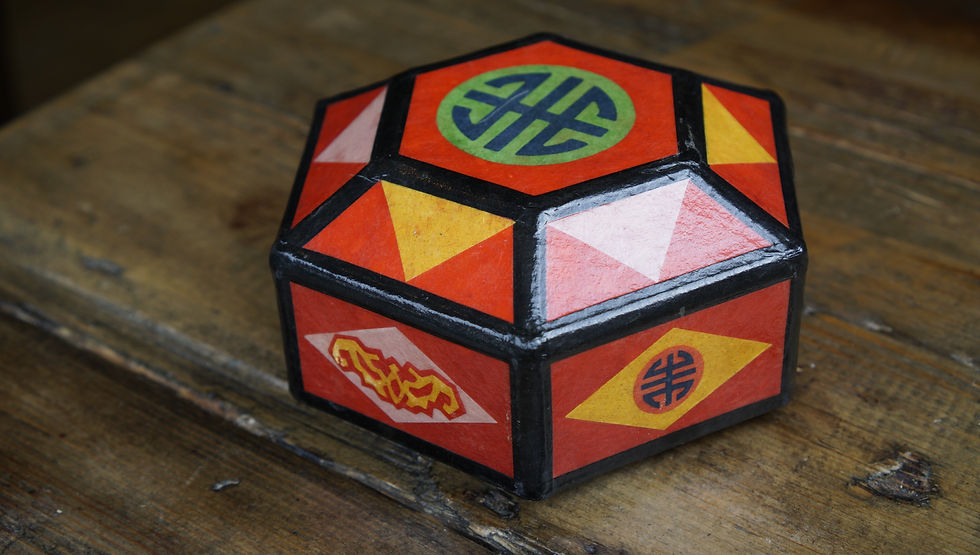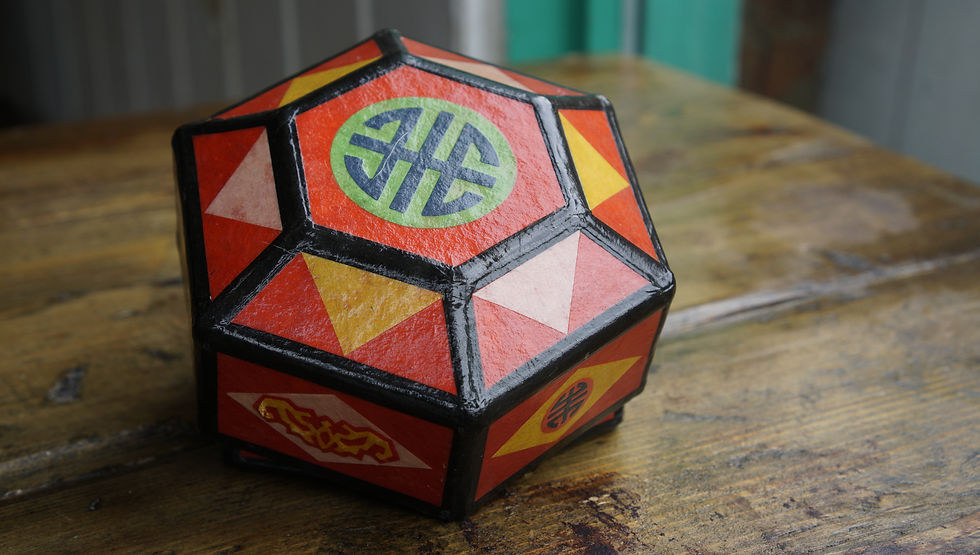KOREA
White
Tiger
"We want people to understand it is not the 18th century, and it is not K-town, and it is not the same food you are going to get”.
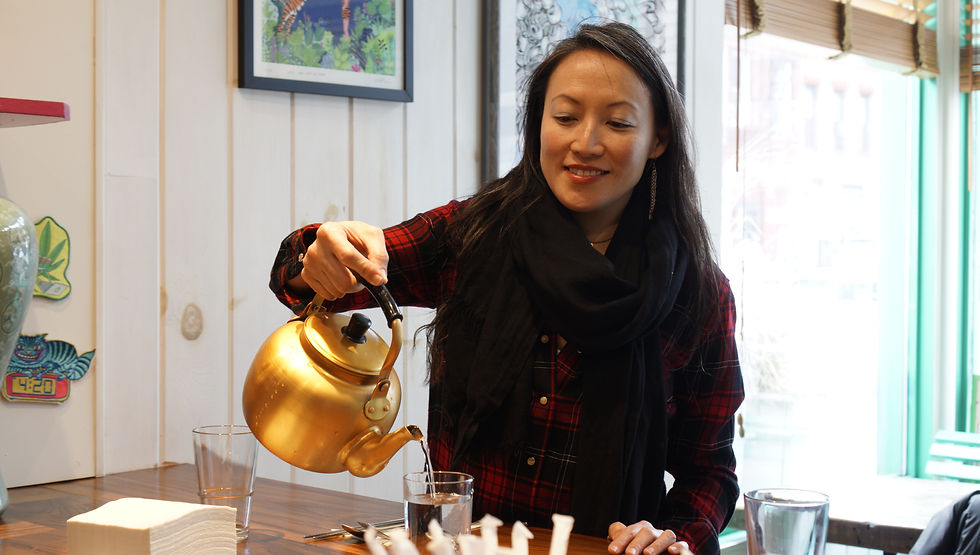
Usually, we find ourselves snooping around in people’s houses asking them questions, but this one is first of a kind interview even for us. As it is of chef Liz Kwon and the restaurant she started with her husband and two other friends, called White Tiger in Brooklyn. It is about how Liz and her husband have manifested their food and culture in this Korean restaurant which is truly a labor of love.
The decor of White Tiger is quite opposite to that of a traditional Korean restaurant which is usually muted colors, bamboo or stainless steel. Instead, it is brightly colored with a mix of quirky local art and Korean artifacts (that are literally from Liz’s or her mother’s house). “We wanted it to be fun and a little different. We want people to understand it is not the 18th century, and it is not K-town, and it is not the same food you are going to get”. Everything in here is a mix of traditional flavors paired with non-traditional ingredients.
Now although we can talk at length about how delicious the food is here, we are always interested in the tools. So, we went snooping around the restaurant, looking for things that are traditional and silently doing their job behind the home-made kimchi and bowls of delicious bibimbap. Here is what we found.
Cha jujeonja
A traditional Korean tea kettle

Cha jujeonja (Tea kettle)
Traditionally Koreans drink tea made of roasted barley or roasted corn. This roasted tea is thrown in a copper kettle along with water and put directly on the stove. The little mesh braiding by the spout prevents the barley or corn from pouring out into the cup.
Liz admits that now she uses electric kettles to make tea as they are more convenient but these traditional copper kettles have been a part of her life. Although they don’t use them for tea anymore, they use them as water pitchers at the restaurant.

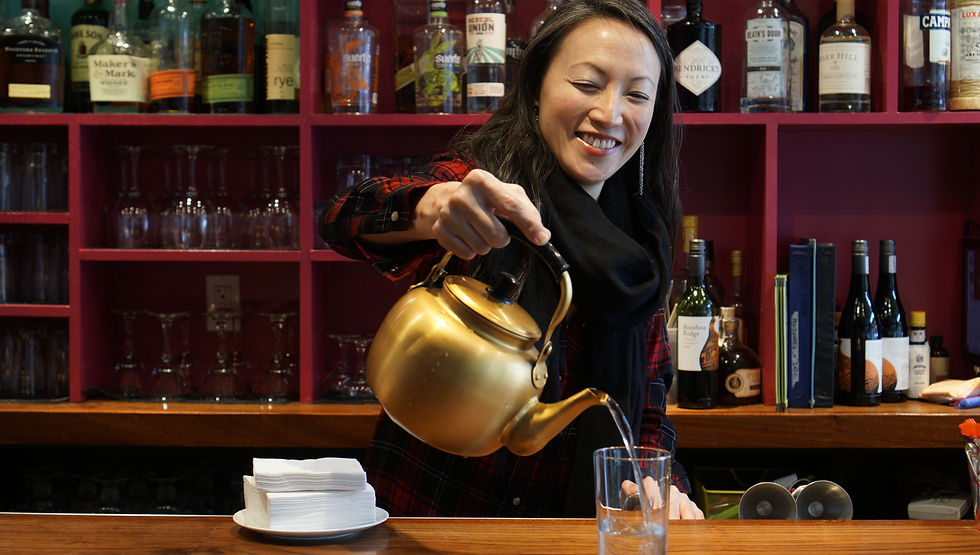

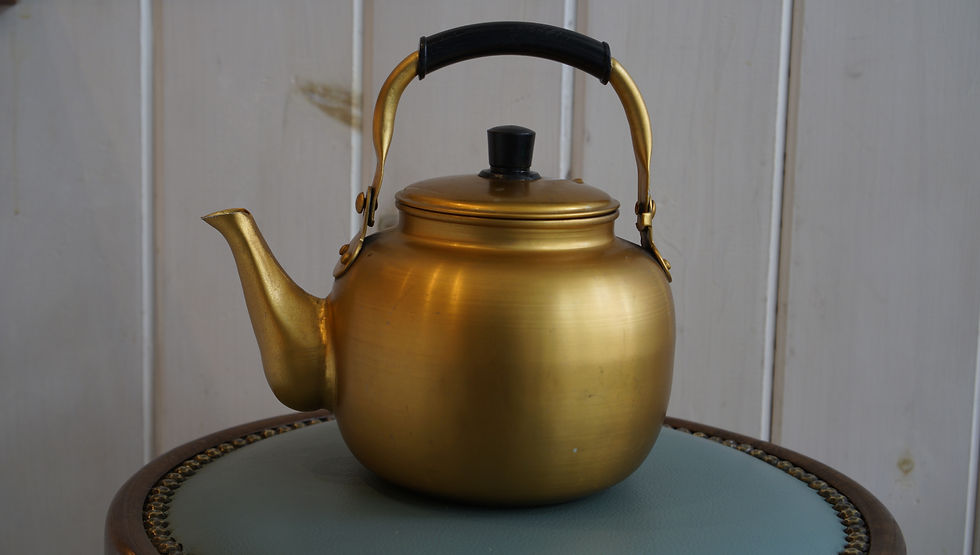



Cha keob
Traditional double-walled celadon tea cups

Cha keob (Tea cups)
With the traditional tea kettle come authentic tea cups. They are small and made of celadon (a type of jade-green porcelain) with three pieces to it, the cup, the filter and the lid (which also serves as a saucer). The filter has tiny holes only on the bottom, and after the tea is brewed, the filter is removed and placed on the upside down lid. The double-walled construction keeps the cup cool.
White Tiger doesn’t serve their tea in them anymore unfortunately as Liz explained it was causing a lot of mess. "People would pull it out to see if the tea was done and then push it back in but the law of physics does not do well with that. You have to do it slowly as holes are so tiny." But Liz uses them at home.









Dolsot
A stone bowl used to cook and serve bibimbap, rice or stews
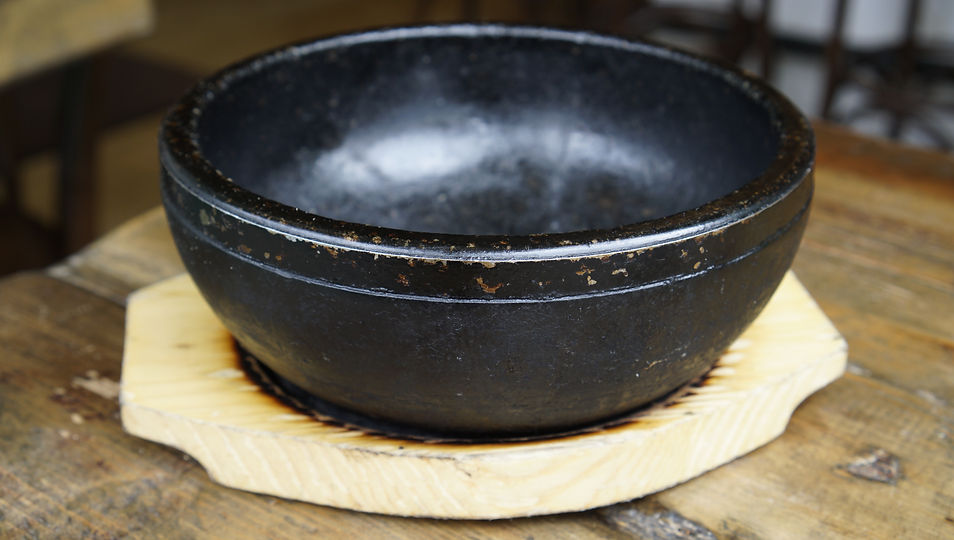
Dolsot
If you eat Korean food as much as we do, you have seen this heavy stone bowl that serves rice dishes especially Bibimbap. It is usually sizzling hot so they warn you from touching it. As a result, we never knew how heavy it is. It is called Dolsot and made of granite. You can also find a dolsot made of ceramic and is lighter than its granite counterpart. Dolsot serves as both a cooking pot and a serving pot as the stone retains heat long after the dish is cooked. It is usually whitish-gray granite color and with time it gets older and blackens.
If you haven’t had Bibimbap yet, I will leave you with this. Mixed rice (crispy at the bottom) sautéed with vegetables, spices (or rather pastes), meat and egg in a hot sizzling pot. White Tiger has a great one on the menu topped with home-made kimchi.







Hanji paper box
Jewelry box made of traditional, handmade paper

Hanji paper box
Koreans do a lot of traditional lacquered pieces from jewelry boxes to furniture. This is the same idea but with base as paper, especially traditional handmade paper called Hanji paper. “I bought this [one] for myself as a jewelry box, years ago when I was in Korea and I have kept it now for about 15 years”. Liz doesn’t use this box for jewelry anymore and it sits on one of the shelves at the bar holding knick-knacks. Like we said before the restaurant is an extension of its owners.
Koreans aren’t shy about using colors and these Hanji paper boxes come in very bright colors; greens, reds and yellows. It is typically used for storing jewelry or as gift boxes

